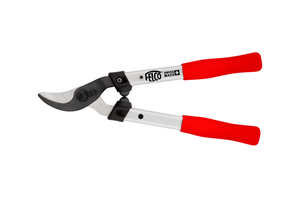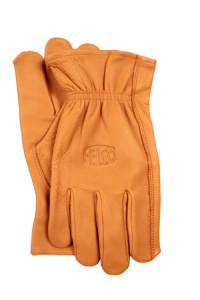
Jean-Luc Pasquier, Master Gardener and #FELCOLover

The thorny bushes of roses, “the queen of flowers”, are generally pruned in autumn at knee height to give the beds a beautiful appearance and to limit breakage in the event of heavy snowfall. In March, the second round of pruning consists of stimulating flowering with a shorter pruning, adapted to each type of rose.
As soon as the heavy frosts of February have passed, it is time to prune the roses. Our garden expert Jean-Luc Pasquier explains: "When we start pruning again on bedding roses that have already been pruned in the autumn, the first thing to do is to gently remove the fir branches so as not to injure the buds underneath this protection. Then I carefully remove the mound of earth that protected the grafting point in order to identify the start of each shoot.
Once this preparatory phase is over, pruning can begin. "A good pair of gloves and sharp pruning shears adapted to roses are essential to enjoy pruning" explains Jean-Luc Pasquier. "The aim of this pruning is to stimulate the emergence of new shoots because roses are shrubs that flower on this year's branches. In short, pruning consists of channelling all the vegetation onto a few well-positioned buds to ensure a good distribution of stems and foliage. "By selecting the distribution of their branches and limiting the number of shoots, roses will be more airy and less susceptible to the appearance of foliage diseases", continues the specialist.
"For bedding roses, i.e. tea hybrids, polyanthus and miniature roses, I select between 5-9 vigorous branches well distributed around the central axis. These will form the structure of the rose. The other weak, dry or badly distributed branches are removed as close as possible to the grafting point", insists the specialist. Now all that remains is to carry out the final part by shortening the selected branches. "It's very simple: I count between 3-5 bud eyes and I prune 0.5-1 cm above a bud that goes away from the central axis. These eyes are actually buds that can be recognised by the red dot highlighted by a line.
There are many other types of roses such as shrub roses, climbers, ground covers and English roses, which are pruned in the same way as bedding roses. "The technique of selecting the branches that we keep to form the skeleton of the rose remains the same, then I reduce each of the young branches to 3-5 bud eyes" concludes the expert.
Jean-Luc Pasquier's tool selection :
This pruning shear combines exceptional ergonomics for smaller and also larger hands, as the inclined cutting head and smaller handles allow you to maximize your cutting power and comfort with every high quality cut you make.

This latest generation loppers offers the perfect balance of power and maneuverability to meet your pruning needs.

This ergonomic pruning shear is easy to use and maneuverable, while maintaining a precise and surgical edge.

Made of high quality, puncture-resistant leather, these gloves are ideal for heavy work, pruning in horticulture, gardening and fruit-growing.

A passionate gardener since his childhood, Jean-Luc Pasquier is a complete horticulturist with a diploma from Lullier in the canton of Geneva. He continued his training in Oeschberg in the canton of Bern where he obtained his diploma and then his federal master's degree. He is a lecturer for plant knowledge in the framework of higher horticultural training. He is also a consultant and horticultural columnist. Passionate about roses, he presides over the International New Rose Competition of Nyon and the group of rose breeders within the World Federation of Rose Societies.

